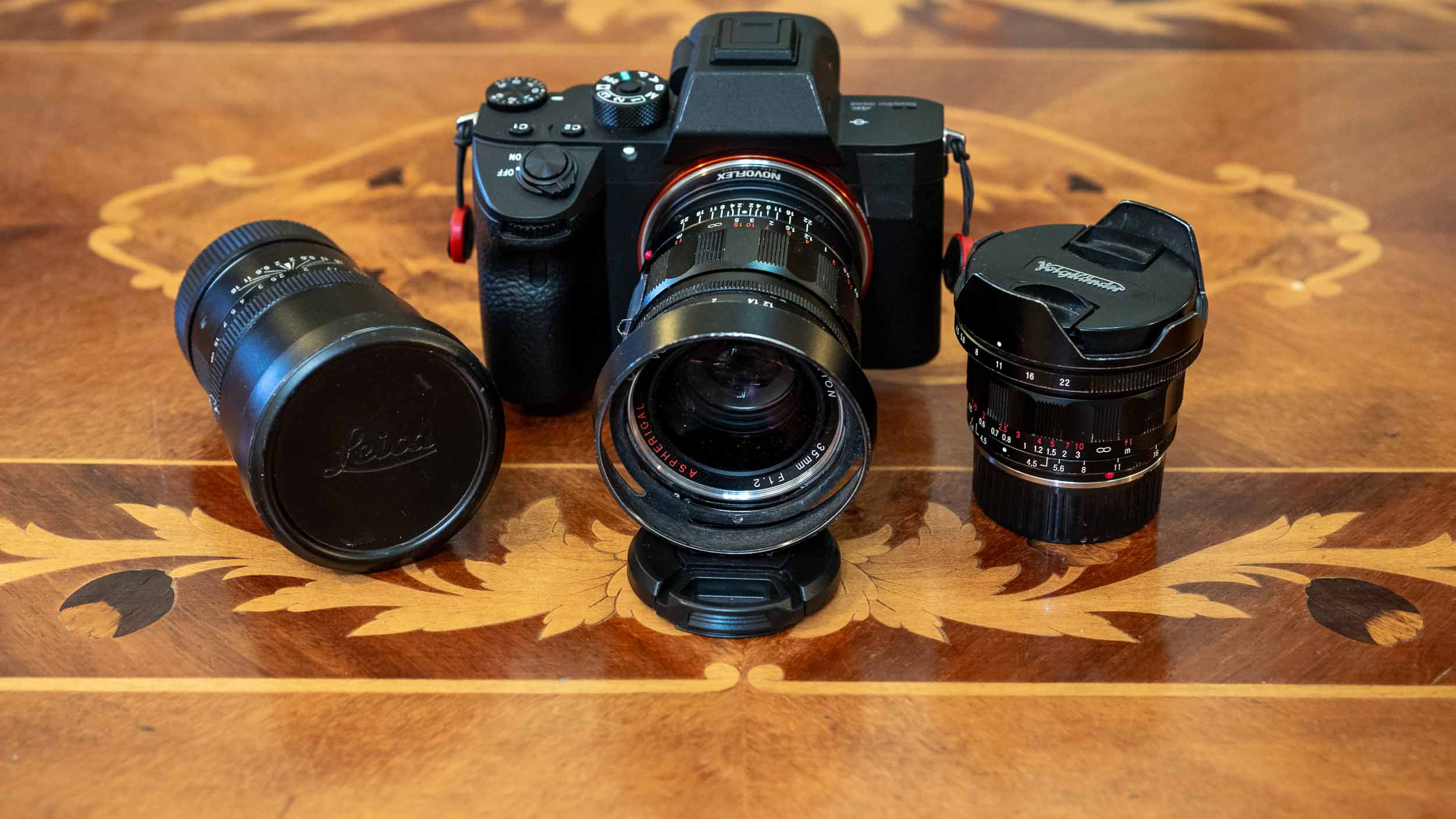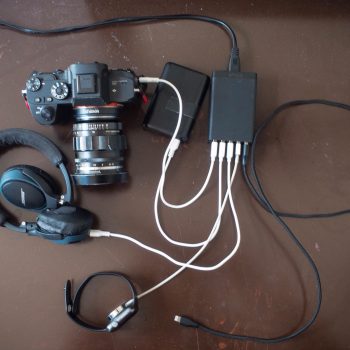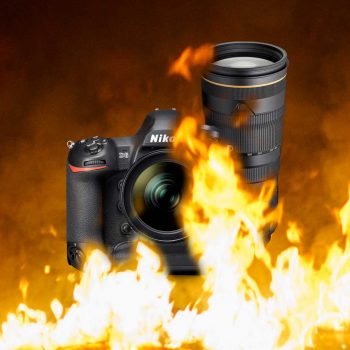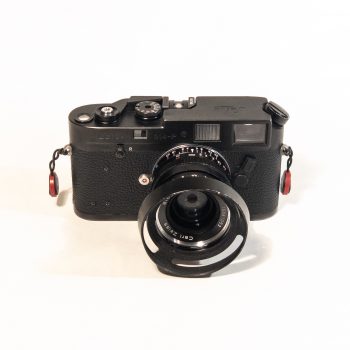There’s nothing wrong with autofocus lenses on mirrorless cameras, but I don’t own any. I used to have a few, but at a certain point I just stopped using them altogether, eventually sold them, and bought more rangefinder lenses for my mirrorless system. I’m not against autofocus or any other fancy technology — I spend most of my time in shutter priority, and I rely heavily on modern sensors with copious dynamic range to save poorly exposed images. But I just like to manual focus. It’s fun in the same way that shooting a gun is fun, or free-throws, darts, billiards, curling, horseshoes, lawn darts, or and any other aim game that takes a little coordination and finesse. It is a challenge and a skill that requires regular practice, and so I end up taking more pictures because I enjoy the process of getting better at it. That’s good enough a reason as far as I’m concerned, but after spending the past two years shooting exclusively with rangefinder lenses adapted to Sony mirrorless cameras, I’ve realized that there are also a number of practical reasons to go through the trouble.
Rangefinder lenses are unique, and they help me create unique photography
I’m not waxing romantic about that ‘special feel’ that vintage lenses have, so stop rolling your eyes. They do have a unique look, but it’s subtle, and you may or may not like it. As with any lens you are thinking about buying, I suggest heading to Flickr or Instagram and browsing the hashtags or groups relevant to whatever lens you’re curious about and see for yourself. When I say that rangefinder lenses are unique, what I mean is that rangefinder lenses are designed for a relatively niche segment of the photography market, and therefore the designs just provide something that is a little different from what everyone else is using.
Canon, Nikon, Sony — all three of the big camera companies offer more or less exactly the same thing for their “holy trinity” of professional zoom lenses, and their primes all inhabit more or less the same form factors and hit the same performance points. There isn’t anything wrong with this, but it just demonstrates that these companies are chasing a mass market business strategy that values broad appeal and convenience over everything else. They produce great lenses that work for everyone.
The companies that are still make rangefinder lenses, on the other hand, are marketing to a much smaller group of people who have some unique ideas about what is important in photography. These people tend to value optical quality, large apertures, portability, and durability. Their customers like to throw around phrases like “German engineering” or “mechanical perfection” and “uncompromising optical quality” so the lenses they make tend to be among the best. At the same time there is also a limit on how big the lens can be, since at a certain point they actually start to physically block the camera’s viewfinder, so these lenses still remain quite small. Rangefinder lenses are also usually just dense chunks of precision cut glass and metal. There is zero play in the mechanisms, and they are about as durable a lens can get. I’m not too worried when I accidentally bump my camera into things, and I’m happy to throw it around a bit. These things have serious heft — would do some serious damage if you threw it at someone.
The overall effect of all of this is that you have the best possible lens, in the smallest possible size, and it’ll last you for decades. It’ll also probably have unique rendering, and great low light capabilities. The only downside here is that the costs can get a little out of hand if you go for the absolute best and have a thing for Leica. But there are also plenty of reasonable options out there, especially those from Voigtlander and Zeiss, that get you 90% of quality for about a tenth the price.
all of this adds up to a completely different experience
One of the most important — albeit counter-intuitive — benefits I’ve discovered while using these small, high quality lenses that also function well in low light situations (other than just being easier to carry around) is that nobody takes me seriously as a photographer. The general public mostly doesn’t have a clue how lenses actually work, and they just assume that anyone walking around with a big white lens and a flash on top is a professional photographer, and so when I come with a relatively compact setup that doesn’t ‘look pro’ they treat me more like a hobbyist. But despite appearances and assumptions, I can still produce professional-grade photography in challenging and intimate situations where more obtrusive equipment and lighting setups would be impractical, distracting, or even straight up forbidden.
While I suppose that there are some cases where you might want to establish your photographic bona-fides with your subjects and flaunt your sizeable gear, I find that it is almost always better to blend in and to do what I can to help the subject forget that they are being photographed. My goal is always to capture something interesting and truthful about the subject, and showing up with a few tiny lenses and a nondescript mirrorless camera helps with this. People pose less, complete strangers are more comfortable with your presence, and in some cases they might not even notice you at all. This lack of artifice is rare in today’s selfie-obsessed world, where people are so used to being photographed that the average person on the street is already an expert at showing you exactly what they want you want to see, and not who they actually are.
This isn’t to say that rangefinder lenses solve everything don’t have any downsides. I do miss perfect focus (probably about 10% – 20%), I do miss shots just because it’s harder to change lenses than twist a zoom ring, and I miss certain moments because manual focusing doesn’t play very well with high frame rates because you lose focus every time the EVF blocks out.
But on the other hand, mirrorless EVF technology is fast improving and I think that we will soon have enough resolution that focus peaking will just get in the way and we will be able to see what’s in focus just by looking. High resolution sensors are also improving, and cropping in is less problematic. In a lot of cases, I can actually focus more accurately and with more control on mirrorless cameras because I can focus anywhere in the frame, and I’m not fiddling with the placement of focus points or constantly waiting for a beep and recomposing.
If I were working as a reporter under a dealine, or if there was a specific moment that absolutely had to be captured, then then maybe these inconveniences are a bit too much. But when I have the luxury of spending some time with someone or with a place, and if your goal is to really capture something interesting, then I think the trade off is well worth it.





